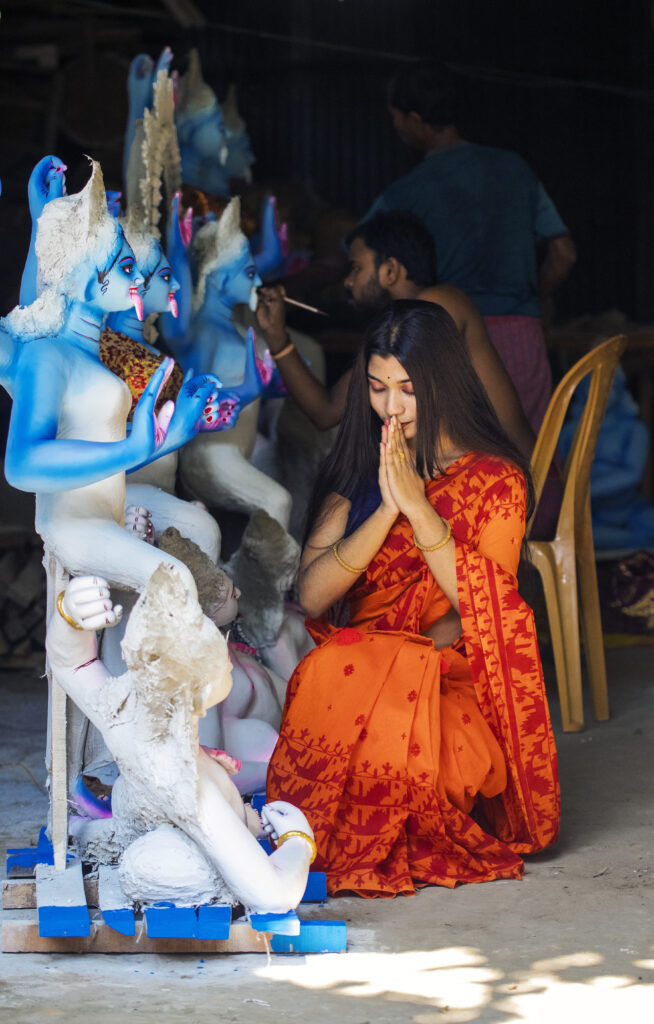Mongolian cuisine is an untapped treasure trove of flavors and culinary traditions, representing the resourcefulness and profound connection that the nation has with its natural surroundings. Often overshadowed by the misleading “Mongolian barbecue” restaurants, the true essence of Mongolian food remains widely misunderstood. With a diverse range of dishes influenced by the country’s varied terrain, Mongolian cuisine primarily revolves around three basic elements: meat, wheat, and salt. From the tantalizing buuz, meat-filled dumplings, to the crunchy and savory khuushuur, deep-fried dumplings, and the unique boodog, meat roasted in animal skin, Mongolian cuisine offers a plethora of mouthwatering options. Delve into the lesser-known gems of Mongolian gastronomy, such as the khorkhog, a dish cooked with hot stones, borts, dried strips of meat, and airag, fermented mare’s milk. Moreover, Mongolian cuisine adeptly balances meat consumption during the winter with dairy products and wild greens during the summer, creating a harmonious culinary experience that truly showcases the richness of Mongolian culture.

Buy Mongolian Cuisine Cookbook
Mongolian cuisine reflects the nation’s resourcefulness and deep-rooted relationship with nature
Mongolian cuisine is deeply rooted in the nation’s resourcefulness and its relationship with nature. The vast and harsh Mongolian landscape has shaped the culinary traditions of the country, resulting in a cuisine that is both practical and delicious. The Mongolian people have adapted to their environment by utilizing the limited resources available to them, such as meat, wheat, and salt. This resourcefulness is reflected in the simple yet flavorful dishes that make up Mongolian cuisine.
Mongolian foods are often misunderstood due to deceptive ‘Mongolian barbecue’ restaurants
One of the misconceptions surrounding Mongolian cuisine is the popular notion of “Mongolian barbecue” restaurants. These establishments, often found in Western countries, serve stir-fried dishes that are not representative of authentic Mongolian cuisine. In fact, the concept of “Mongolian barbecue” is not a traditional Mongolian cooking method. The name is misleading and has led to a misunderstanding of the true flavors and ingredients of Mongolian cuisine. It is important to distinguish between these Westernized versions and the authentic Mongolian dishes that showcase the nation’s culinary heritage.

Get Your Hands On Mongolian Recipes
Mongolian cuisine is diverse, with flavors influenced by the country’s varied terrain
Mongolia’s varied terrain, which ranges from vast grasslands to rugged mountains, has greatly influenced its cuisine. Each region offers its own distinct flavors and ingredients, resulting in a diverse culinary landscape. The nomadic lifestyle of many Mongolians also plays a significant role in shaping the cuisine, as it necessitates the use of portable ingredients that can withstand the harsh climate. From hearty meat dishes to refreshing dairy products, Mongolian cuisine encompasses a wide range of flavors that reflect the country’s unique geography and cultural heritage.
Mongolian dishes often contain just three basic elements: meat, wheat, and salt
The simplicity of Mongolian cuisine is one of its defining characteristics. Mongolian dishes typically consist of just three basic elements: meat, wheat, and salt. This minimalistic approach allows the natural flavors of the ingredients to shine through. Meat, such as beef, lamb, or goat, forms the foundation of many Mongolian dishes. It is often cooked over an open fire or roasted in animal skin, resulting in tender and flavorful meat. Wheat is another staple ingredient in Mongolian cuisine, which is used to make various types of dumplings and noodles. Salt is used sparingly to enhance the flavors of the other ingredients, resulting in well-balanced and savory dishes.

Popular Mongolian dishes
Buuz (meat-filled dumplings)
Buuz is a popular Mongolian dish that consists of meat-filled dumplings. Typically made with ground lamb or beef, the filling is seasoned with onions, garlic, and various spices. The dumplings are then steamed, resulting in a tender and juicy filling encased in a thin, delicate dough. Buuz is often served as a main course or as a part of a larger meal, accompanied by dipping sauces or condiments. The simplicity of this dish allows the flavors of the meat to shine through, making it a favorite among Mongolians and visitors alike.
Khuushuur (deep-fried dumplings)
Khuushuur is another type of dumpling that is popular in Mongolian cuisine. Unlike the steamed buuz, khuushuur is deep-fried, resulting in a crispy and golden exterior. The filling is similar to that of buuz, typically consisting of ground beef or lamb seasoned with onions, garlic, and spices. Khuushuur is often enjoyed as a handheld snack or as a quick and satisfying meal. The contrast between the crispiness of the outer shell and the flavorful meat filling makes khuushuur a delicious and indulgent treat.
Boodog (meat roasted in animal skin)
Boodog is a unique Mongolian dish that involves roasting meat inside the skin of an animal. Traditionally, the skin of a goat or a sheep is used, and the meat is marinated with various spices, onions, and garlic before being placed inside the skin. The skin is then sewn shut and roasted over an open fire, resulting in a succulent and flavorful roast. Boodog is a celebratory dish often enjoyed during special occasions or festivals. The cooking method used in boodog showcases the resourcefulness of the Mongolian people, as it allows them to make use of every part of the animal and create a delicious and memorable meal.
Other notable dishes
Khorkhog (meat, offal, and vegetables cooked with hot stones)
Khorkhog is a traditional Mongolian dish that involves cooking meat, offal, and vegetables with hot stones. The ingredients are placed in a large metal container along with hot stones, which are used to cook the food. The container is then sealed and buried in the ground, allowing the heat from the stones to slowly cook the ingredients. This cooking method results in tender and flavorful meat and vegetables. Khorkhog is often enjoyed during festive gatherings or special occasions, as it requires time and effort to prepare. The unique cooking technique used in khorkhog highlights the ingenuity and resourcefulness of the Mongolian people.
Borts (dried strips of meat)
Borts is a traditional Mongolian food that consists of dried strips of meat. Originally developed as a way to preserve meat for long periods of time, borts is often made from beef, lamb, or goat. The meat is thinly sliced and then dried under the sun or in a drying apparatus. The drying process removes moisture from the meat, allowing it to be stored for extended periods without spoiling. Borts is a popular snack among Mongolians, as it provides a convenient and nutritious source of protein, especially during long journeys or harsh winters.
Airag (fermented mare’s milk)
Airag is a traditional Mongolian beverage made from fermented mare’s milk. It is a staple in the Mongolian diet and is often consumed throughout the year. The fermentation process gives airag a slightly sour taste and a fizzy texture, similar to that of yogurt or kefir. Mongolians consider airag to be a refreshing and invigorating drink, and it is often enjoyed during celebrations or festive occasions. The consumption of airag also highlights the adaptability of Mongolian cuisine, as it utilizes the resources available in the local environment.
Mongolian cuisine balances meat consumption in winter with dairy products and wild greens in the summer
The harsh winter climate in Mongolia necessitates a diet that is rich in meat, providing the necessary energy and sustenance to combat the cold temperatures. During the winter months, Mongolian cuisine heavily relies on hearty meat dishes such as roasted meats and warming stews. However, in the summer, when the weather is more temperate and the grasslands are abundant with lush vegetation, the Mongolian diet shifts to include more dairy products and wild greens. Dairy products such as yogurt, cheese, and fermented mare’s milk become a staple in the summer months, providing a refreshing source of nutrients. Wild greens, such as nettles and wild onions, are foraged and incorporated into various dishes, adding a fresh and vibrant element to the summer menu. This balancing act between meat consumption in the winter and dairy products and wild greens in the summer showcases the resourcefulness and adaptability of Mongolian cuisine.
In conclusion, Mongolian cuisine reflects the resourcefulness and deep-rooted relationship that the Mongolian people have with nature. The diverse flavors of Mongolian cuisine are influenced by the country’s varied terrain, resulting in a culinary landscape that showcases the unique geography and cultural heritage of the nation. Mongolian dishes often consist of three basic elements: meat, wheat, and salt, allowing the natural flavors of the ingredients to shine through. Popular Mongolian dishes such as buuz, khuushuur, and boodog highlight the simplicity and deliciousness of Mongolian cuisine. Other notable dishes such as khorkhog, borts, and airag showcase the ingenuity and adaptability of the Mongolian people. Furthermore, Mongolian cuisine balances meat consumption in the winter with dairy products and wild greens in the summer, demonstrating the reliance on available resources and the ability to adapt to changing seasons. Overall, Mongolian cuisine is a testament to the nation’s rich cultural heritage and the connection between the land and its people.
